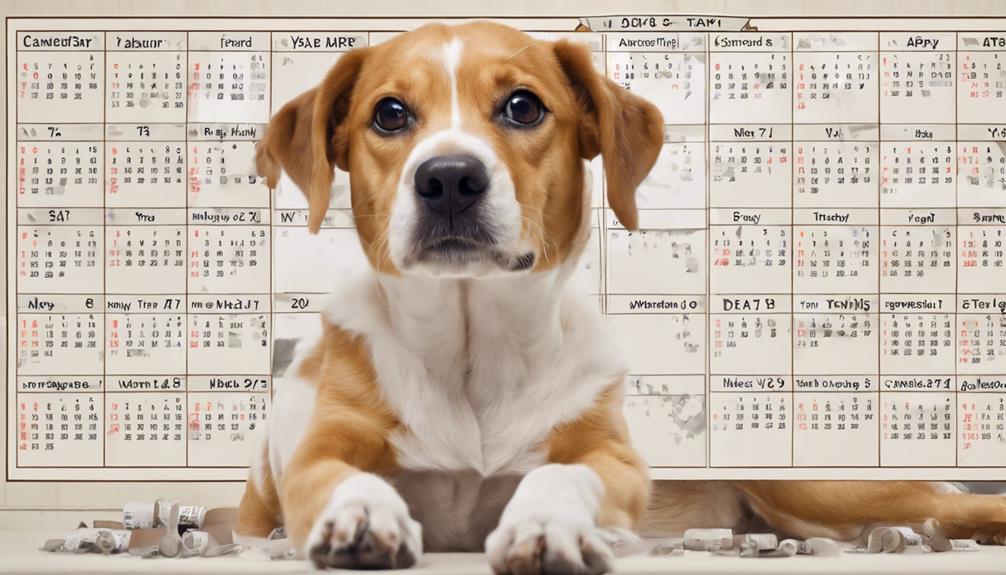When your dog won't settle down, notice stress signals like excessive barking or pacing. Create a calm space with soothing music and comfort items. Teach tricks for focus and use interactive toys. Stick to a daily routine for stability. Check for health issues that may affect behavior. Visit a vet for help if needed. Understanding your dog's cues is essential for a peaceful environment.
Key Takeaways
- Identify stress signals: Watch for body language cues like pacing and panting.
- Create a calming environment: Minimize noise, use calming pheromones, and provide a safe space.
- Engage in calming activities: Teach tricks, use interactive toys, or try gentle exercises.
- Maintain consistent routines: Establish stability with predictable schedules for meals and playtime.
- Address health concerns: Regular screenings, proper nutrition, and vet assessment for behavioral triggers.
Recognizing Canine Stress Signals
We can easily identify our dog's stress signals by observing their behavior closely. Dogs communicate their discomfort through various body language cues such as excessive barking, pacing, panting, or restlessness. Additionally, dilated pupils, trembling, hiding, or even aggressive behavior can indicate stress in our furry friends.
By recognizing these signs, we can better understand when our dog is feeling overwhelmed or anxious. Understanding our dog's stress signals is vital because it helps us respond appropriately to help soothe them. When we observe these signs promptly and take action to address them, we can prevent the escalation of anxiety in our dogs.
Paying attention to our dog's body language and behaviors is key to creating a harmonious environment for them. By being attentive to their stress signals, we can improve our ability to calm and comfort our canine companions effectively.
Creating a Calming Environment
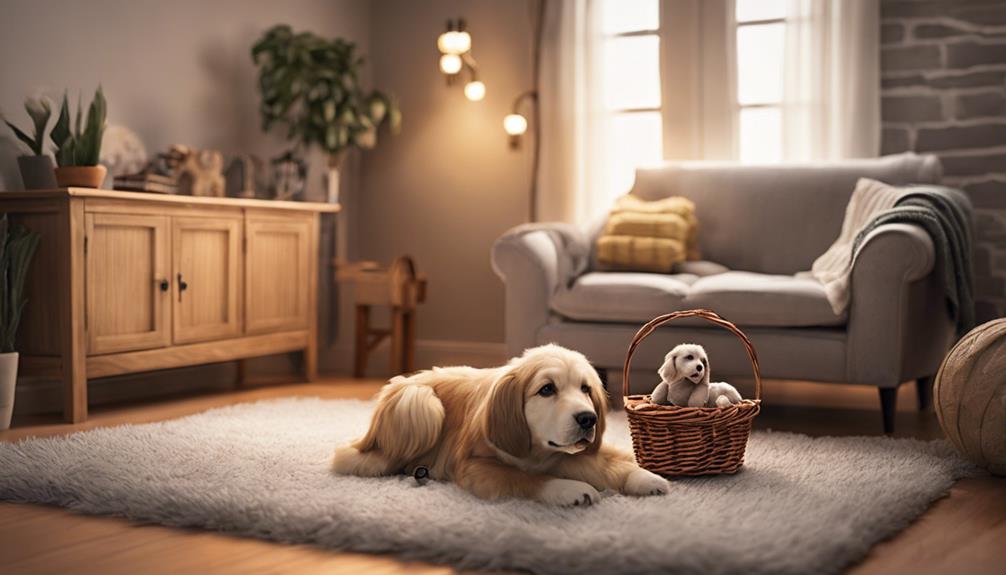
Setting up a serene atmosphere can aid in calming your dog when it's restless. To assist your dog relax, make sure the environment is quiet and free from loud noises or distractions.
Consider using calming pheromones, music, or white noise to create a soothing atmosphere that can help your dog unwind. Providing a comfortable bed or blanket in a designated safe space can promote relaxation and a sense of security for your furry friend.
It's also important to maintain a consistent daily routine for meals, playtime, and rest to help your dog establish a predictable schedule, which can reduce anxiety. Additionally, you may want to explore using anti-anxiety wraps or vests that provide gentle pressure, helping to calm your dog during stressful times.
Engaging in Calming Activities
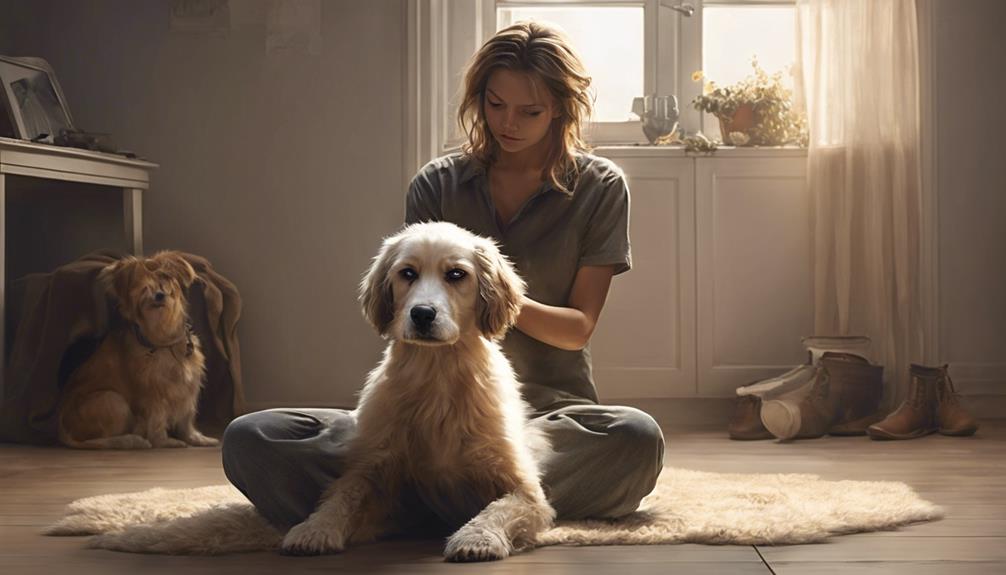
Engaging in calming activities with your dog, such as gentle massages or cuddling, can help promote relaxation and bonding. Here are some ways to help your dog unwind and find peace:
- Teaching Your Dog: You can teach your dog simple tricks or commands that require focus and concentration, helping to redirect their energy in a positive way.
- Help Your Dog: Provide interactive toys or puzzles that will mentally stimulate your dog, keeping them engaged and preventing boredom or restlessness.
- Calming Exercises: Consider incorporating calming exercises like deep breathing or gentle stretching to help your dog relax their body and mind.
- Creating a Soothing Environment: Use calming pheromones or essential oils to create a peaceful atmosphere that can help your dog feel secure and at ease.
Implementing Consistent Daily Routines
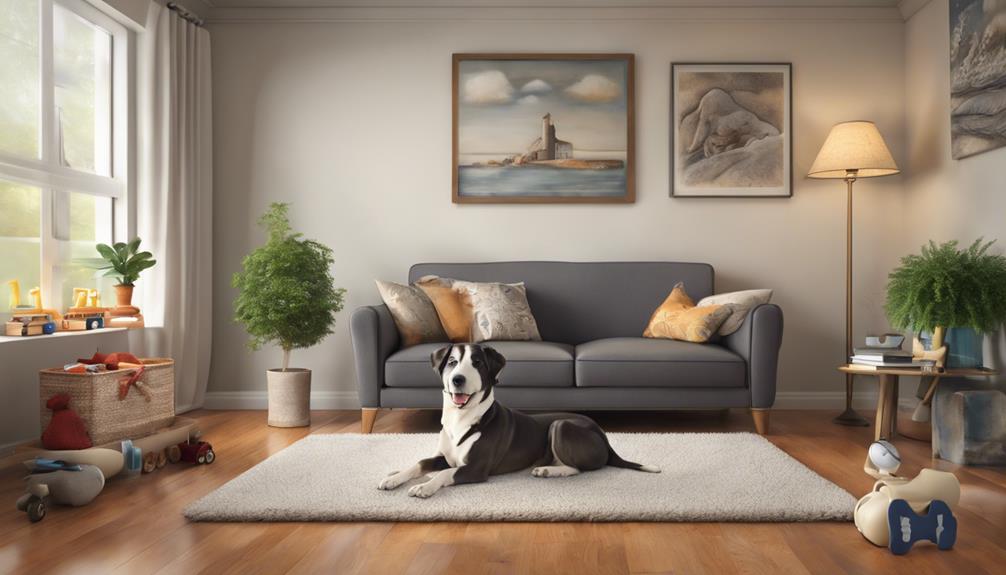
Implementing consistent daily routines is essential for providing structure and stability in your dog's life. When you train your dog to expect regular feeding times, exercise schedules, and play sessions, it helps them know what to anticipate each day. This predictability can reduce anxiety and restlessness in your furry friend.
As you move around your daily activities, your dog gets accustomed to the rhythm of the day and feels more secure. Dogs thrive on routine, so sticking to a consistent schedule can have a calming effect on them. By establishing a set routine, you're creating a sense of normalcy that can help your dog feel more at ease and content.
Addressing Underlying Health Concerns
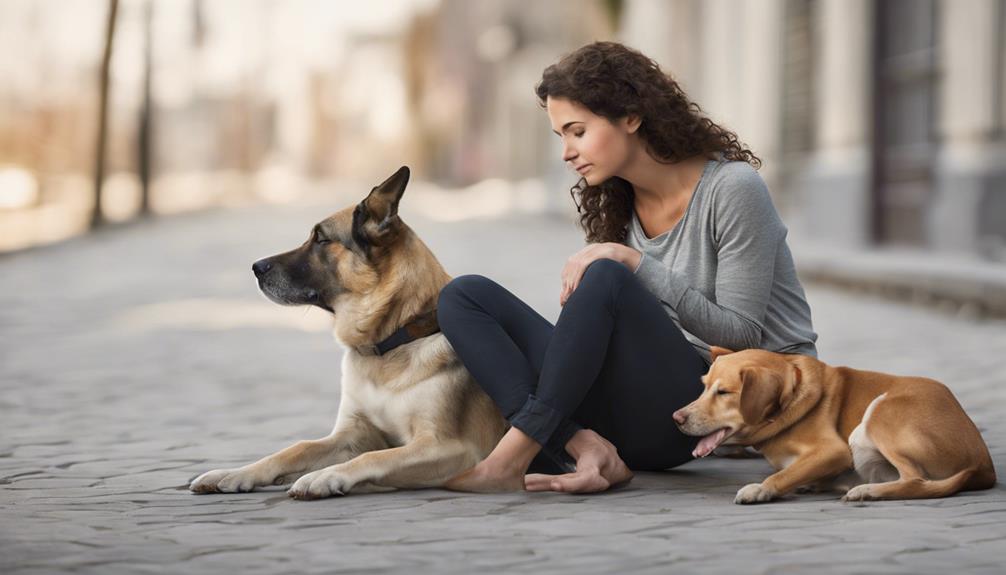
When your dog won't settle down, it's important to evaluate their health.
We need to examine health screening, assess nutrition impact, and check for behavioral triggers.
Health Screening Importance
Regular health screenings play an essential role in uncovering underlying health issues that may be contributing to your dog's restlessness.
- Identify Problems Early: Catching health issues early can lead to better treatment outcomes.
- Preventive Care: Regular check-ups help prevent potential health problems.
- Peace of Mind: Knowing your dog is healthy can bring peace of mind.
- Quality of Life: Addressing health concerns can improve your dog's overall quality of life.
Make sure your dog receives routine health screenings to guarantee they're in the best possible health. Consulting with a vet for a thorough evaluation can help pinpoint any underlying health issues causing your dog's restlessness.
Nutrition Impact Check
Guaranteeing your dog's diet aligns with their specific nutritional needs is essential for addressing underlying health concerns that may be contributing to their restlessness. When a dog starts exhibiting restless behavior, a thorough evaluation of their diet is pivotal.
Imbalanced diets can lead to issues like digestive discomfort, allergies, or nutrient deficiencies, impacting your dog's behavior. Seeking professional help from a veterinarian is essential to make sure your dog is receiving the right nutrients tailored to their age, breed, and health condition.
High-quality, balanced dog food with essential nutrients can support overall health and potentially aid in calming your canine companion. By addressing any nutritional deficiencies or sensitivities through proper diet adjustments, you can help improve your dog's well-being and behavior.
Behavioral Triggers Assessment
Let's explore evaluating the behavioral triggers in your dog to address any underlying health concerns that may be contributing to their restlessness.
- Assess your dog's health: Look for signs of discomfort or pain like limping, changes in appetite, or excessive scratching.
- Consult with a vet: Rule out medical issues such as arthritis, dental problems, or gastrointestinal concerns.
- Address health problems promptly: Alleviating discomfort can help your dog to be calm and contribute to a more settled demeanor.
- Behavioral triggers assessment: Identify the root cause of your dog's restlessness to implement appropriate solutions for a calmer pet.
Seeking Professional Guidance if Needed
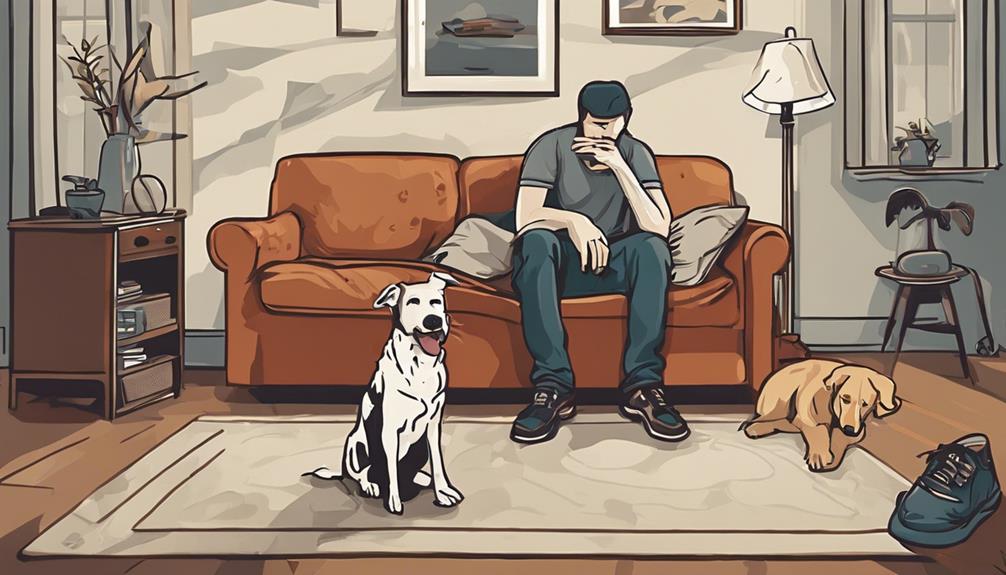
If expert assistance is needed for addressing your dog's restlessness, consulting a certified dog trainer or behaviorist can provide customized solutions. These specialists can observe your dog's behavior, assess triggers, and recommend specific techniques to help calm your canine companion. Additionally, they can offer personalized training plans to address any underlying issues contributing to your dog's inability to settle down. Below is a table outlining the advantages of seeking professional guidance:
| Benefits of Professional Guidance |
|---|
| Tailored solutions for your dog's behavior |
| Expert evaluation of triggers |
| Personalized training plans |
| Customized strategies for calming your dog |
Frequently Asked Questions
What to Do With a Dog That Won't Settle Down?
If your dog won't settle down, try identifying the root cause. Provide a cozy environment and engage in calming activities like gentle massage or soothing music.
Consider natural calming aids or supplements recommended by a vet. Consult with a professional trainer for personalized strategies.
How Do I Calm My Dog Down Asap?
When your dog needs to chill ASAP, try engaging them in calming activities like petting or massage. Utilize calming aids such as essential oils or pheromone diffusers.
Put on calming music or white noise to drown out stress triggers. Offer a special treat or toy for distraction and comfort.
Practice deep breathing exercises together to regulate breathing and promote relaxation. These methods can swiftly help your furry friend settle down in no time.
How Do You Get a Hyper Dog to Settle Down?
To help a hyper dog settle down:
Create a safe and quiet space conducive to relaxation. Engage in positive reinforcement training to encourage calm behavior. Provide physical exercise and mental stimulation for relaxation. Consider calming aids recommended by vets.
Consult a certified trainer for tailored solutions. Remember, patience and consistency are key to helping your hyper dog find peace and tranquility.
What Does It Mean When Your Dog Can't Settle?
When your dog can't settle, it's a red flag signaling potential stress, discomfort, or health issues. Restlessness might indicate anxiety, fear, or insecurity. Watch out for behaviors like pacing, panting, whining, or excessive attention-seeking.
Pinpointing the root cause is key to proper care. To help your furry friend relax, try calming methods, provide a safe space, and consider seeking expert guidance. Understanding the cues your dog gives can lead to a happier, settled pup.
Conclusion
To sum up, when your dog won't settle down, it's important to understand their stress signals and create a calming environment for them.
Engaging in soothing activities and sticking to consistent daily routines can also help alleviate their anxiety.
Remember, addressing any underlying health concerns is vital for your furry friend's well-being. Seeking professional guidance if needed is always a good idea.
By taking these steps, you can help your canine companion relax and feel at ease.






